Inside the belly of Pirate Studios in Bristol, I connect to the Wi-Fi and let UMMMI know that I’m ready for a chat. I swipe the green button and she appears on my phone screen, comfortable in her cosy, daylight-fresh London flat. It’s thanks to JAEFF that we’re talking. Her film, Desktop Treasure, is due to screen at the Japanese Avant-Garde and Experimental Film Festival (JAEFF) this weekend, 22nd September 2018, so it’s the perfect time to catch up with her.
An instantly striking aspect of Umi Ishihara’s work is the costume design. She tells me that the main character in Desktop Treasure is a friend of hers, the fashion blogger, @Ikedahirari. When it was shot six years ago, Instagram wasn’t so big. Since then, Hirari has grown with the platform, amassing 30k+ followers and heralding a stunningly subversive visual world of skin and colour. Her violently cute style is the centre of attention in Desktop Treasure, which follows her at home trawling through pop-art tapes and traipsing mischievously around Tokyo. Some of her self-crafted clothing has “UMMMI” stitched into the fabric.
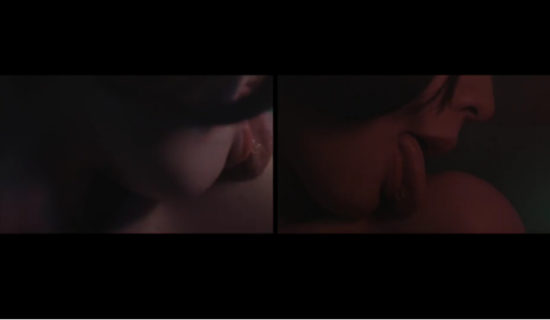
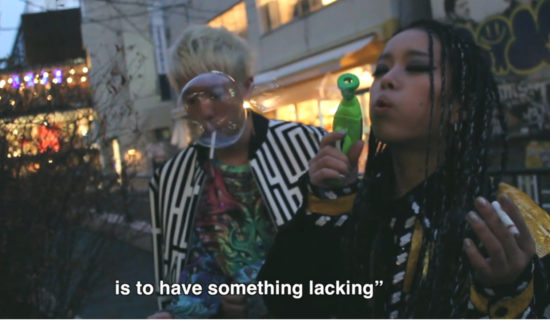
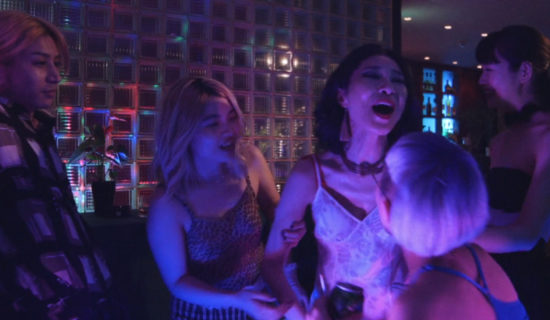
Within the soundtracks of UMMMI lies the never-ending rotation of a completed tape, the hum of an unlocatable extractor fan, or the constant thrum of thought. “In real life, there’s always chaotic noise,” she tells me, “wherever I am, there’s one specific sound that stands out from the rest. In this sense, this aspect of the soundtrack is how I hear the world”. I ask her if she makes any of the music in the films herself.
UMMMI explains that her parents pushed her down that path from a young age, urging her into the world of techno and electronic dance music. Her father works in the music business, involved in the Tokyo nightclub scene. Why doesn’t she want to follow in their footsteps? “Music is my angel. I don’t want to touch it,” she explains enigmatically. With such an eclectic mix of music in her film’s soundtracks and a strong connection to Tokyo’s nightlife, I feel as though UMMMI must have a great idea of what nightclubs to explore in Tokyo.
“It really depends on the night and what you’re looking for,” she says, admitting that there are lots of great clubs in Japan’s capital. “The best clubs of all though have to be Forestlimit and Bonobo. They’re both tiny little clubs that play a bit of everything: noise, dubstep, techno, deep house. It’s got a nice, weird vibe.” That’s my next visit to Japan sorted.
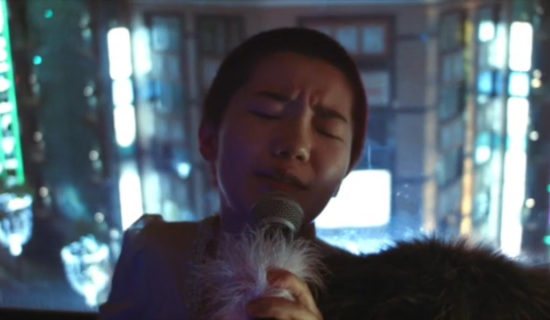
Beyond the traditional movie setting – everyone sitting down in a dark room staring at a giant screen – I wanted to know where she preferred her work to be viewed. She tells me about a few of her films that were designed for the gallery space, where people can walk around with friends, lovers, or strangers and have the freedom to watch or walk away. She finds the cinema a constrictive environment for film and an overall abrasive experience. Once the force of colour and noise is over you walk away and have to let it all slowly sink in. She decides that as a director, it’s better to discover what realm your films work best in.
Lost Wedding Ring But Now Found is Umi’s 2016 installation featuring two looped films, a super directional speaker, and two pairs of headphones. It was exhibited at her Pink Queendom solo show at Shinjuku Ophthalmologist (Ganka) Gallery. On one screen Lilium Kobayashi, a transgender master of the drum machine and synthesizer, focuses on creating a thumping bleep-core rhythm, making sure her nose-ring is in place. On the other, the dreamy vocalist ALMA leans against the city-facing window and sings, lonely. Umi explained that the use of a directional speaker, which whispers to you as you enter the gallery space, was inspired by a past exhibition by Genesis P-Orridge (Psychic TV). The looped films were shot in a high-rise Tokyo apartment where one of the members of Pink Queendom lives with his mum, who works as a Contemporary Geisha.
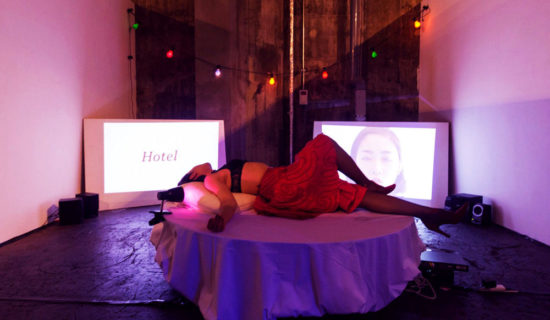
I wanted to know more about another of Umi’s films that utilises dual screens. While it still looks beautiful on her website, Hotel Shakespeare was again shot for the gallery space. Umi lets me know about the original set-up. The screens were adjacent and between them stood a slowly spinning bed that she designed. The actress featured in the film, Momoko Ishihara, read poetry live as the film played. I asked Umi about the title. “To me, the love hotel is like Shakespeare’s theatre. Everybody goes there and does the same thing but with a slightly different approach.” knowing the work of avant-garde filmmakers Eisenstein and Kenneth Anger, the theory of montage is clear throughout Umi’s work. Narratives are laid out in a radically different pattern to the status quo. When I asked her, she said “Kenneth Anger is like a friend to me. I’ve never met him, but he feels like a friend. I love the violence and music in his work.”

An aspect of Hotel Shakespeare that intrigued me was how long the shots lasted. The camera is held on Momoko’s face for far longer than you’d expect, leading to this voyeuristic view of her emotions. Umi explains that she uses long shots because “it shows their soul, their true movement.” She adds how this element is aided by her friends playing the parts, as they are open and real with each other, which is what she is interested in seeing. She and Momoko have been friends since they were teenagers. She tells me about her debut feature-length film that consists solely of four-minute-long shots. The Garden Apartment was released in 2017. It became an official selection of the Osaka Asian Film Festival 2018.
After obsequiously observing Umi’s work, another thing became quite clear: she loves unique fonts. As soon as the titles appear on the screen, you know it’s a UMMMI production without even reading the words. “I love weird fonts,” she tells me. “You know when you wake up and you’re half asleep in the morning, arm hanging off the side of the bed? That’s when I start scrawling through fonts on my phone trying to find new, strange fonts. Aside from films, I also make zines. A lot of my creativity comes through those and my notebooks,” she continues, “in these I experiment with fonts, let future storylines grow, and focus on different ideas.”
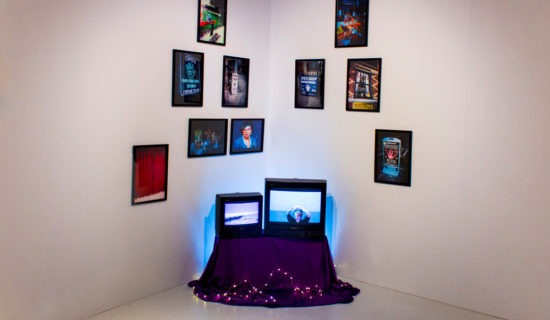
In the colourful pipeline, Umi is set to produce a film exploring acid. When I mentioned Gaspar Noe’s Enter the Void, she said “I love his work, but to me he overstated the madness and intensity of the experience. Whilst Enter the Void is an amazing film, I want to be honest about people’s relationship with drugs.” She likened her approach to a more classical style of cinema. For the first time, she’s planning to be shooting on 16mm film. This work is set to appear at Spiral, the giant gallery in Tokyo next March.
More imminently however, Umi’s films are being screened internationally. This week, on the 20th of September, one of her films is showing at the Institute of Modern Art (IMA) in Queensland, Australia. It’s being presented alongside several shorts that have a connection to Queensland, as part of the IMA’s Green Program. And of course, right on my doorstep, Desktop Treasure, featuring Ikeda Hirari, is screening on Saturday 22nd (this weekend) as part of JAEFF. Desktop Treasure will run alongside Nagisa Oshima’s new wave classic, Diary of a Shinjuku Thief. I would say go and grab a ticket, but it’s sold out, naturally.















































